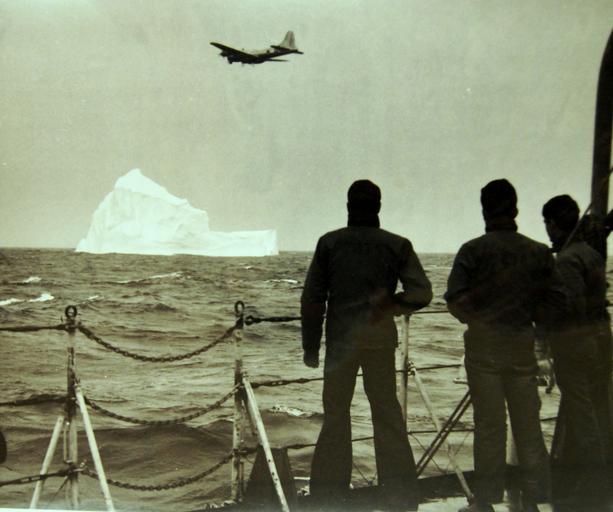MAKE A MEME
View Large Image

| View Original: | Lot_2282-12.jpg (2368x1977) | |||
| Download: | Original | Medium | Small | Thumb |
| Courtesy of: | www.flickr.com | More Like This | ||
| Keywords: Lot 2282-12: International Ice Patrol – 1948. Combined air and surface operations and the effective use of radar by Coast Guard patrol units contributed to the success of the 1948 International Ice Patrol. Coast Guard ice observers are trained in observing and evaluating the size, direction, and speed of iceberg travel. Ice observer stands continuous watch in the “nose” of the plane. Combined air and surface operations and the effective use of radar by Coast Guard patrol units contributed to the success of the 1948 International Ice Patrol. It was the mission of the 1948 patrol to locate and report ice conditions constituting a menace to navigation, to determine set and drift of icebergs, to collect weather information and surface and sub-surface oceanography data, and to keep all interested parties and commercial shipping informed thereof. The importance to mariners of “ice broadcasts” is evidenced by the fact that practically all commercial radio transmission ceases during these broadcasts. The International Ice Patrol along the steamer lanes of the North Atlantic is conducted by the United States Coast Guard. Coast Guard cutters and planes assigned to the patrol are based at Argentia, Newfoundland. Shown here are three crew members of the U.S. Coast Guard ship Mendota (WHEC 69) watch the Coast Guard ice observation plane fly over a large berg. Around May 1st, fog blankets this area, a clear day like this was a real break for the photographer. Photographed October 3, 1948. (2015/10/09). Lot 2282-12: International Ice Patrol – 1948. Combined air and surface operations and the effective use of radar by Coast Guard patrol units contributed to the success of the 1948 International Ice Patrol. Coast Guard ice observers are trained in observing and evaluating the size, direction, and speed of iceberg travel. Ice observer stands continuous watch in the “nose” of the plane. Combined air and surface operations and the effective use of radar by Coast Guard patrol units contributed to the success of the 1948 International Ice Patrol. It was the mission of the 1948 patrol to locate and report ice conditions constituting a menace to navigation, to determine set and drift of icebergs, to collect weather information and surface and sub-surface oceanography data, and to keep all interested parties and commercial shipping informed thereof. The importance to mariners of “ice broadcasts” is evidenced by the fact that practically all commercial radio transmission ceases during these broadcasts. The International Ice Patrol along the steamer lanes of the North Atlantic is conducted by the United States Coast Guard. Coast Guard cutters and planes assigned to the patrol are based at Argentia, Newfoundland. Shown here are three crew members of the U.S. Coast Guard ship Mendota (WHEC 69) watch the Coast Guard ice observation plane fly over a large berg. Around May 1st, fog blankets this area, a clear day like this was a real break for the photographer. Photographed October 3, 1948. (2015/10/09). | ||||